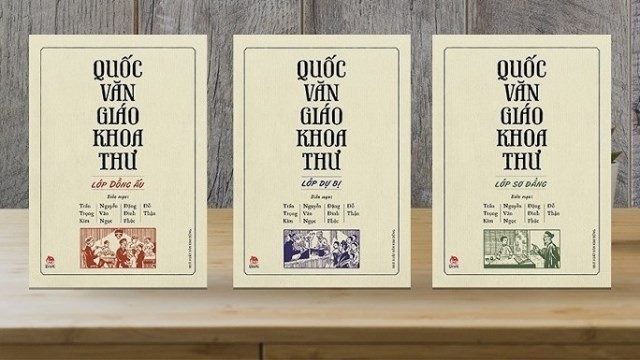The book collection is a product of reputable and famous compilers, including Nguyen Van Ngoc, Dang Dinh Phuc, Tran Trong Kim and Do Than.
Born with the aim of teaching the Vietnamese language for elementary school pupils (equivalent to the first three years of elementary education today) across the nation, the Quoc Van Giao Khoa Thu consists of three books: The Dong Au (children) book - Cours Enfantin for fifth grade students, including 34 first lessons for letters and spelling and the following 55 ones are for reading exercises, the Du Bi (reserve) book - Cours Préparatoire for fourth graders, including 120 reading exercises, and So Dang (preliminary) book - Cours Elémentaire is for third graders, consisting of 84 reading exercises.
The most interesting thing throughout the series is that in the reading exercises, it always incorporates moral, historical, geographical, hygiene and natural content, along with explanations of the meaning of words, homework and writing exercises. Each lesson has an illustration, in the way of innocent and sincere wood carvings, by painters Nam Son and Nguyen Van Tho.
The teacher's instructions are noted below. The lessons are short, easy to understand, drawn in a familiar sentence or phrase that helps children to remember easily.
 |
According to the authors, in the books’ introduction, they noted that the way of teaching letters like this, with words in the upper side and the sounds under with pictures alongside, helps children to mobilise all their senses to learn and practice each word straightforwardly. The illustrative pictures in the books have another benefit: to make the children love the drawings and want to learn, as well as help them learn about familiar things around them.
In the latest publication, Kim Dong Publishing House has relied heavily on the 1935 print edition, with several lessons with inappropriate content having been omitted. Old-style writing is modernised in accordance with the current Vietnamese writing style, for example, not using hyphens between compound words, while misleading errors have been thoughtfully edited. Particularly, in illustrations, the publishing house has made the pictures more elaborate and clearer.
Nearly a century has passed, but the lessons in the books are still valid, leaving a lot of positive impressions and feelings in the hearts of modern learners, thanks to high education and pedagogy level and short languages being easy to understand and close to children's psychology.
















